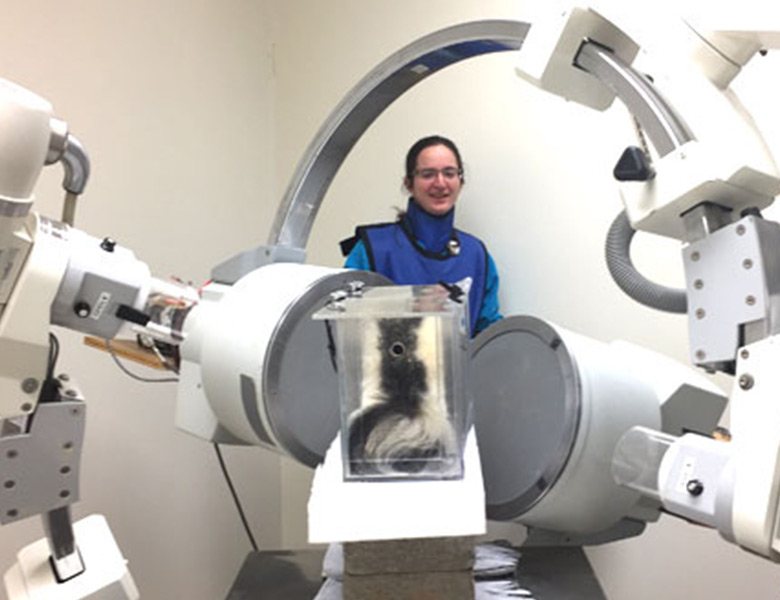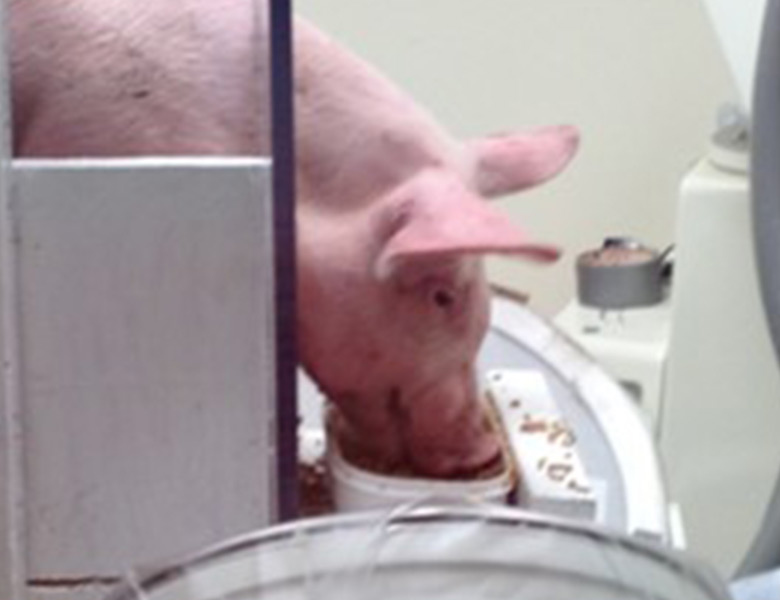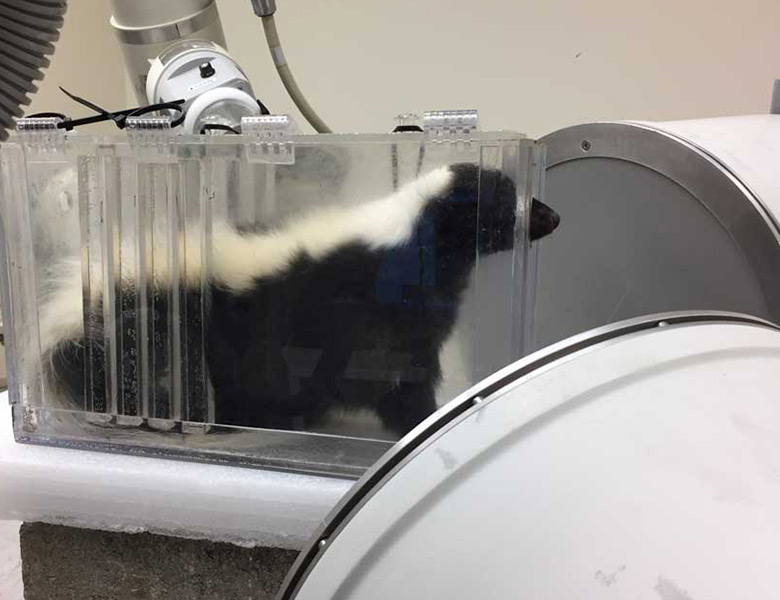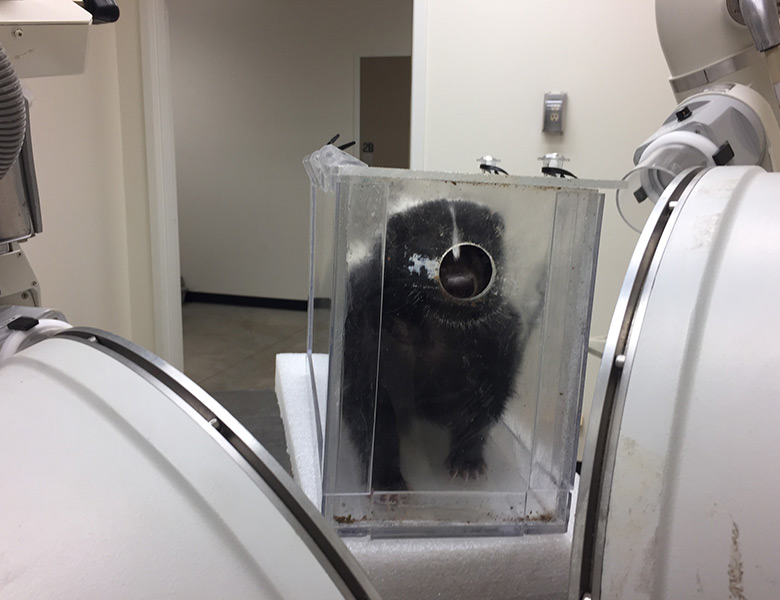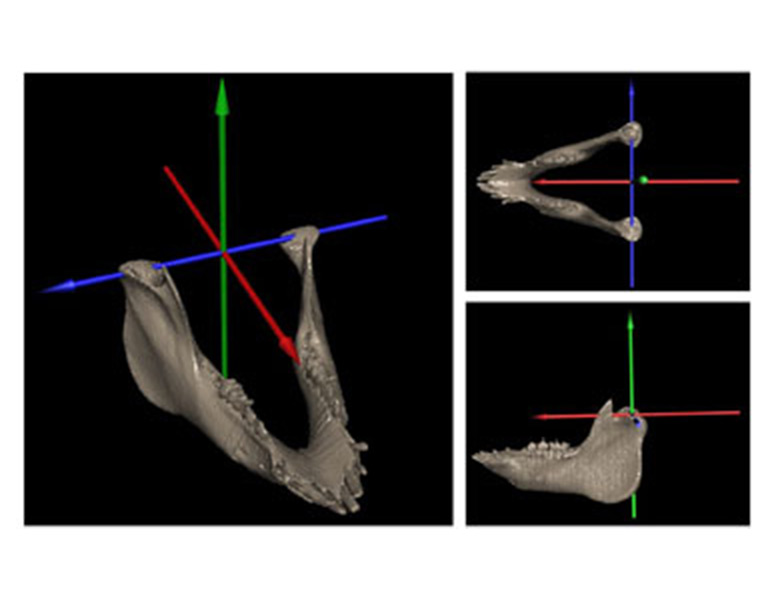Modulation of Forces and Kinematics During Mastication
Mastication involves very complex, small and fast movements of the jaw, tongue and hyoid. In each chewing cycle, jaw movements align the teeth to break down food.
The tongue, supported by the hyoid, maintains the food on the teeth. Morphological specializations for diet influence these movements, as do interactions between oral sensory receptors and central and peripheral motor systems. The goal of this research is to determine how oral sensory information and morphology interact to influence the complex jaw and tongue movements that occur during mastication. In dietary specialists, anatomy may play a central role in limiting oral movements to those that are ideal for chewing a narrow range of foods. In contrast, generalists may be capable of more variable movements to deal with broader diets and thus may rely more on oral sensory information to control movements of the tongue and jaw. Using X-ray Reconstruction of Moving Morphology, this project will determine how morphological specialization for diet impacts chewing kinematics and how movements are affected in the absence of oral sensory feedback. Results will shed light on potential selective pressures influencing the evolution of sensory and motor systems involved in mastication, a behavior that is implicated in the early evolution and radiation of mammals.
In collaboration with the Dr. Geoffrey Gerstner’s lab at the University of Michigan, this project will also develop novel methods for analyzing the continuous kinematic data resulting from XROMM data. Initial analyses will be conducted by extracting predetermined static kinematic variables from continuous movement profiles. As this approach leaves most of the data unanalyzed, Dr. Gerstner’s lab will develop and test new analytic tools under the rubric of Functional Data Analysis (FDA) and compare results to those derived from comparisons using the static variables. FDA is an ideal partner for XROMM because it analyzes the entire movement profile.
This work is currently funded by the National Science Foundation grant IOS-1456810.
Selected Publications
- Montuelle SJ, Olson R, Curtis H, Sidote J, and SH Williams. 2018. Flexibility of feeding movements in pigs: effects of changes in food toughness and stiffness on the timing of jaw movements. Journal of Experimental Biology 221: jeb168088 doi: 10.1242/jeb.168088
- Chen Y, SH Williams, AL McNulty, JH Hong, SH Lee, NE Rothfusz, PK Parekh, C Moore, RW Gereau 4th, AB Taylor, F Wang, F Guilak, W Liedtke. 2013. Temporomandibular joint pain: a critical role for Trpv4 in the trigeminal ganglion. Pain 154:1295-1304. doi: 10.1016/j.pain.2013.04.004
- Ravosa MJ, CF Ross, DB Costley and SH Williams. 2010. Allometry of masticatory loading parameters in mammals. Anatomical Record 293: 557-571. http://doi.org/10.1002/ar.21133
- Ross CF, A Eckhardt, A Herrel, WL Hylander, KA Metzger, V Schaerlaeken, RL Washington and SH Williams. 2007. Modulation of intra-oral processing in mammals and lepidosaurs. Integrative and Comparative Biology 47:118-136. https://doi.org/10.1093/icb/icm044
